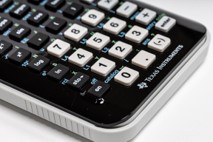The Rule of 2 is Inaccurate
In Texas Holdem poker, the rule of 4 and 2 is a well-known short-cut method for converting the number of outs (on the flop or turn) into an approximate percentage probability of hitting your outs.
Rule of 2 on the Flop (Flop to Turn)
Table 1 shows the odds of hitting one of your outs on the turn. The second column shows the exact percentage probability of hitting one of your outs. This is calculated by dividing the number of outs by the number of unseen cards and multiplying the result by 100.
Table 1: Calculating Flop to Turn – The Rule of 2.1 is Significantly More Accurate than the Rule of 2
.PNG)
Example: You want to count the probability of hitting one of 15 outs. The number of unseen cards is 47.
Therefore, you calculate (15÷47) x 100. This comes to 31.9%.
As you can see, this is the result in the table.
It’s too complicated to make this calculation in your head over the poker table. Therefore, poker players came up with the rule of 2 as an approximation. The third column of Table 1 shows the result via the Rule of 2. With the rule of 2, you just multiply the number of outs by 2. So, the approximation for 15 outs is 15 X 2, which is 30.
The fourth column in Table 1 shows the result using a Rule of 2.1. The Rule of 2.1 simply means that you multiply the number of outs by 2.1 instead of 2.
The fifth and sixth column show how far from the exact percentage, the Rule of 2 and 2.1 are, respectively.
As you can see the Rule of 2.1 is much closer to the exact percentage compared to the Rule of 2.
Calculating the rule of 2.1 is simple to do by mental arithmetic. So, let’s look at how to calculate the Rule of 2.1.
Rule of 2.1 on the Flop (Flop to Turn)
The Rule of 2.1 Formula: Multiply the number of outs by 2. Calculate the number of outs divided by 10. Add the 2 numbers together.
Example: You want to count the probability of hitting one of 15 outs.
Step 1: Multiply the Number of Outs by 2
15 x 2 = 30
Step 2: Calculate the Number of Outs divided by 10
The number of outs is 15. Divide this by 10 and you have 1.5.
Step 3: Add steps 1 and 2 together which is 30 + 1.5 and you have 31.5.
As you can see, this is the number in the table and it’s very close to the exact number, which is 31.9%.
As long as you can divide by 10, it takes a tiny amount of effort to include the correction into the Rule of 2.
Rule of 2.2 on the Turn (Turn to River)
Table 2 shows the odds of hitting one of your outs on the river.
Table 2: Calculating Turn to River – The Rule of 2.2 is More Accurate than the Rule of 2.1 and 2.2

The second column shows the exact percentage probability of hitting one of your outs. This is calculated by dividing the number of outs by the number of unseen cards and multiplying the result by 100. On the turn, the number of unseen cards is 46. There are 52 cards in the deck. On the turn, there are 6 cards that you can see – 4 cards on the board and 2 cards in your hand. That leaves 46 unseen cards.
Example: You want to count the probability of hitting one of 15 outs. The number of unseen cards is 46.
Therefore, you calculate (15÷46) x 100. This comes to 32.6%.
As you can see, this is the exact percentage shown in the table.
Table 3: The Rule of 2.2 has the Lowest Error Rate for Calculating the Turn to River Percentages

This is a table of the error rates of the rule of 2, 2.1 and 2.2 for calculating the probability of hitting your outs on the river. The further away the error rate is from zero, the worse the accuracy.
The first column of Table 1 shows the percentage error via the Rule of 2, the second column shows the percentage error using a Rule of 2.1 and the third column shows the percentage error using the Rule of 2.2.
As you can see the Rule of 2.2 is very close to the exact percentage.
The Rule of 2.2 is simple to do by mental arithmetic. The process involves 3 steps.
The Rule of 2.2 Formula: Multiply the Number of Outs by 2. Add to this 10% of the result.
Example: You want to count the probability of hitting one of 15 outs.
Step 1: Multiply the Number of Outs by 2
15 x 2 = 30
Step 2; Divide the result from Step 1 by 10. The result from Step 1 is 30 and 30/10 is 3.
Step 3: Add the results of Step 1 and 2 together – 30 + 3 is 33.
As you can see, this is the number in the table and it’s very close to the exact number, which is 32.6%.
As long as you can divide by 10, it takes a tiny amount of effort to include the correction into the Rule of 2.
Conclusion
As long as you can divide by 10, it takes a tiny amount of effort to include the correction into the Rule of 2.
